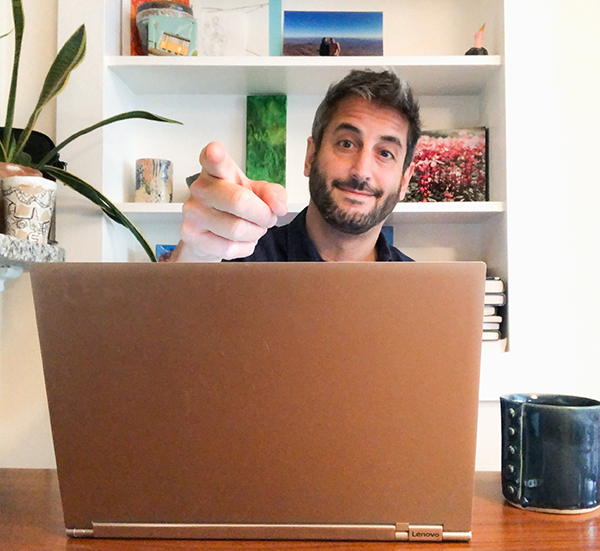
HBO
Sex and society have a complex relationship. Mainstream television often either reflects that complex relationship or overlooks it. TV tells us what audiences desire and what is acceptable, acting as a moral and cultural barometer, according to the authors of the 2012 book Television, Sex and Society.
Warning: The last few paragraphs of this story contain spoilers for the final episode of And Just Like That.
The dominant guide to relationships at the time was Men Are From Mars, Women Are From Venus by relationship counselor John Gray. The piece of pop psychology sat high on bestseller lists for years (as well as on my parents’ bookshelf), describing men and women as members of “the opposite sex” — an archaic term assigning two fixed biological categories, each with innate behaviors.
Representations of sex on TV have exploded since the time of I Love Lucy, when showing pregnancy on TV was considered too risqué. Janet Hardy, sex educator and co-author of the book The Ethical Slut, remembers married couples on television sleeping in separate beds. Today “a popular mainstream show like Modern Family can show a gay family lovingly and without judgment,” said Hardy, who grew up at a time when same-sex sexuality was against the law.
CNET Culture That’s why Sex and the City was considered cutting-edge and revered by so many, including gay and queer men, according to Jacobs. “For the first time you had this fictional depiction of people talking frankly and openly about sex in a way that promoted agency and empowerment,” he said. The series — which had gay creators and writers — came out in the shadow of the AIDS crisis, when many people deeply feared the consequences of being sexually active.
The Sex and the City cast (sans Samantha) crashes into a brave new 2022.
Still, the finale reveals how the three main characters are open to embracing change. “The future is unwritten,” Carrie says on her podcast, as she transcends her grief to find romance as a widow. Charlotte learns to accept Rock’s determination to be unlabeled, and Miranda allows herself to be vulnerable. Personal transformation at any age is a valid story that deserves to be told.
But the show only glosses over these common challenges. As a result, instead of empathizing with Miranda’s choice to pursue her own happiness, viewers have bemoaned that her husband Steve was left in the dust — even earning the beloved character a #justiceforsteve hashtag. Though the show acknowledges the existence of open marriages, the final episode follows a conventional template: a powerful sexual awakening is reduced to an affair, and the primary relationship terminates in divorce.
And Just Like That can’t get it up
Hardy appreciates Netflix’s Sex Education not only because the teenage characters are empowered to make adult sexual decisions — the show also emphasizes accurate and sensitive education as the key to sexual happiness. “Sex isn’t treated as a bargaining chip or a status marker; it’s shown as a way to give and receive touch, affection and pleasure,” Hardy said in an email. And the show “does not judge anybody’s kinks or orientations.”

NBC
Miranda’s sexual storyline in And Just Like That is the most authentic, and the most deserving of more depth. Her relationship with Che is a catalyst for a journey of self-discovery that involves coming to terms with stasis in her marriage. At 55, Miranda realizes she’s given up a part of herself, including her own sexual agency.
The characters, chiefly Samantha, gave license to talk about sexual desire without shame or worry. Coinciding with the emergence of antiretroviral medications and treatment, the show rarely mentioned condom use and never dealt with HIV or AIDS. Jacobs, a great admirer of the show, appreciated how Sex and the City helped normalize conversations around pleasure. “It represented in my cohort this fantasy of freedom that we didn’t really have,” he said.
The Brady Bunch Movie,” said Damon Jacobs, a New York City-based HIV prevention specialist and psychotherapist. The 1995 film took the wholesome Bradys from the original 1970s sitcom and transported them into the modern world. Outside of their idyllic bubble, the popular family appears silly and naïve. Could the creators of And Just Like That succeed by inviting fans to mock their favorite characters’ outdated narrative?
Women don’t really come from Venus
The Golden Girls paved the way for casual sex talk during brunch.
Carrie and Co. also struggle to understand nonbinary characters: Rock, Charlotte’s kid, and Che Diaz, Miranda’s love interest. When Miranda reveals that she and Che had mind-blowing sex (in her words, “a finger”), Charlotte wonders if her friend is suddenly gay, bluntly concluding, “You are not progressive enough for this!”
In the late 1990s, the original Sex and the City was an edgy show about single women’s sexual independence. Decades later, And Just Like That not only contains minimal sex, it also misses major opportunities to explore the complexities of sexuality. How is a series that once broke a mold now so… square?
Euphoria digs deep into the gender and sexual identities of its characters.

Getty Images

More colors of the rainbow, but no spectrum
Oh, how we miss you, Samantha. Compared with those shows, And Just Like That feels, for younger viewers, like a remnant of a bygone age. Generation Y (millennials) and Z (zoomers) have access to almost every sexual proclivity, via social media and through internet porn. As sexual representation becomes more inclusive and fluid, some people from older generations feel alienated, according to Habie.

HBO
In Habie’s view, if a show were to accurately address the sexuality of women in their 50s, it would focus on the role of psychological arousal — things like masturbation, role playing and fantasy, which become more pivotal as women age and their hormones change. “Good sex is about expansiveness, discovery and curiosity,” she said. Older women often go through a second puberty as they tap into their eroticism, leading many to the best sex of their lives.
The struggle to maintain desire in long-term relationships is real. It’s a topic addressed by Jacobs in his practice as well as by renowned psychotherapist Esther Perel. “The challenge for modern couples lies in reconciling the need for what’s safe and predictable with the wish to pursue what’s exciting, mysterious and awe-inspiring,” Perel writes in Mating in Captivity. Miranda couldn’t find passion inside her monogamous relationship, and maybe she didn’t want to.
Young people are also sharing more about their sexuality publicly, giving us a glimpse into their lives that’s made its way to popular television. HBO’s Euphoria, a show about teenagers dealing with drug addiction, sexual abuse and trauma, has a complexity and expansiveness other shows don’t, said Habie. The young characters are represented as unique individuals who just happen to be on journeys exploring their sexual and gender identities — they aren’t unique solely because of their sexual and gender identities.
And Just Like That is a story about Gen Xers trying to navigate what feels like a foreign new world. In the first episode, Carrie gets flustered over the mere mention of public masturbation on a sex and dating podcast. Later, she awkwardly asks her long-term partner, Big, whether he… ever tickles the pickle.


Netflix
The best sex of our lives
If one adjective describes HBO’s And Just Like That, it’s “cringey.”
Less widespread was The Ethical Slut, a groundbreaking guide to relationships outside of conventional monogamy, which appeared a year prior to Sex and the City’s debut. Talk of open marriage or polyamory was socially rejected then, but Hardy said 1997 had cracked open a few doors in mainstream depictions of sexuality — Ellen Degeneres came out of the closet publicly and Buffy the Vampire Slayer depicted a powerful heroine having vampire sex. Still, she said, “I can’t think of any television show that showed a fully sexual woman without judgment at that time.”
Che initially assumes Miranda is in an open marriage, but it’s never discussed as an option.

HBO
Though Sex and the City had a large queer following, the show approached LGBTQ characters with stereotypes and tokenism: Carrie’s gay bestie, Stanford, is more of a decoration than an independent person with lived experiences, and bisexuality is presented as mere experimentation and confusion. All these years later, And Just Like That hasn’t done much better.
Habie notes that neither the original Sex and the City nor the reboot depict the gender and sexuality spectrum, which spans a multitude of identities and orientations. And Just Like That tries to step out of its antiquated boy/girl divide by simply adding the “other” label. “Now you have your triangle — you have one more option,” Habie said. Case in point: Che’s podcast is called X, Y and Me.

2022’s best TV shows you can’t miss on Netflix, HBO, Disney Plus and more
See all photos






